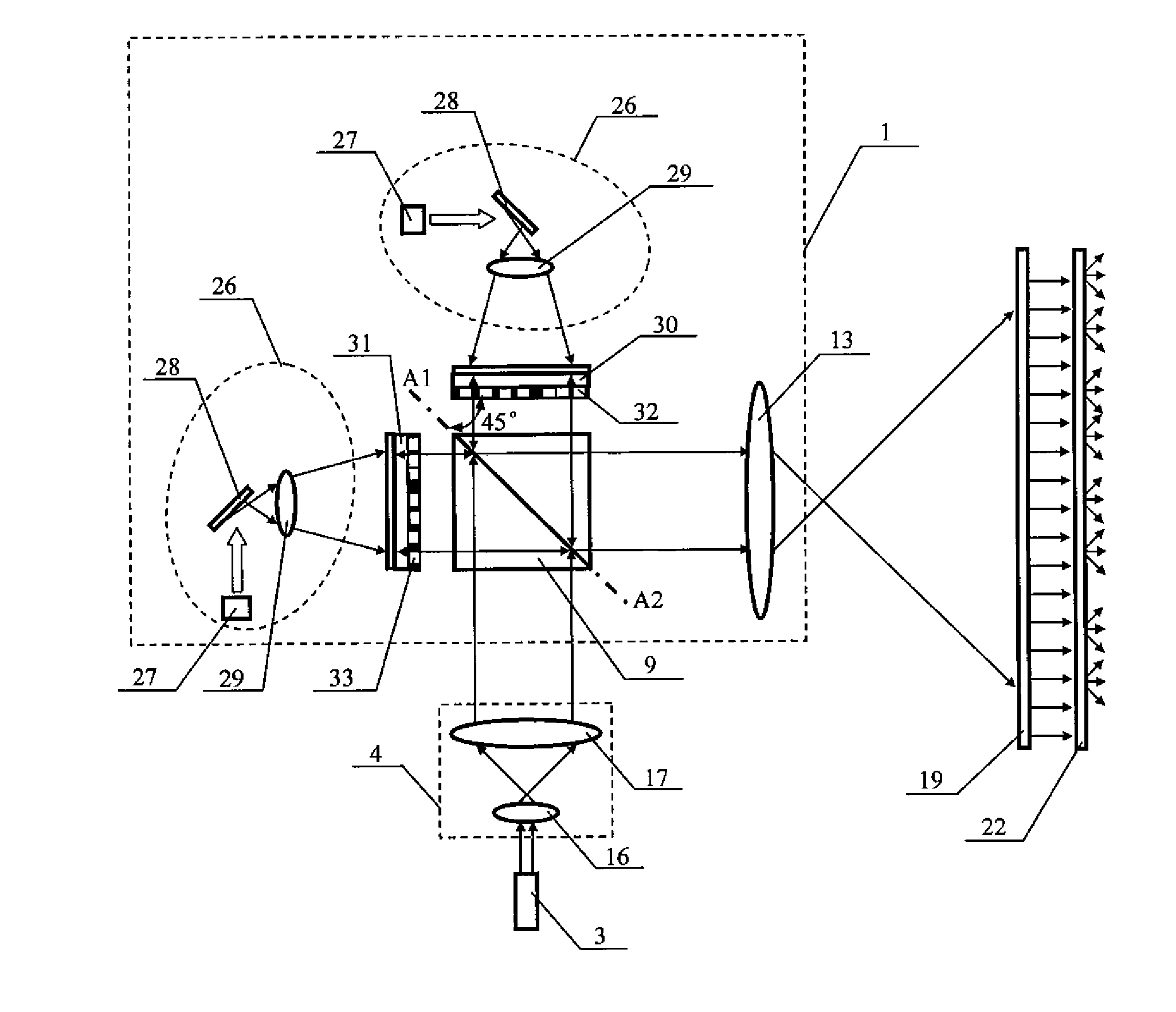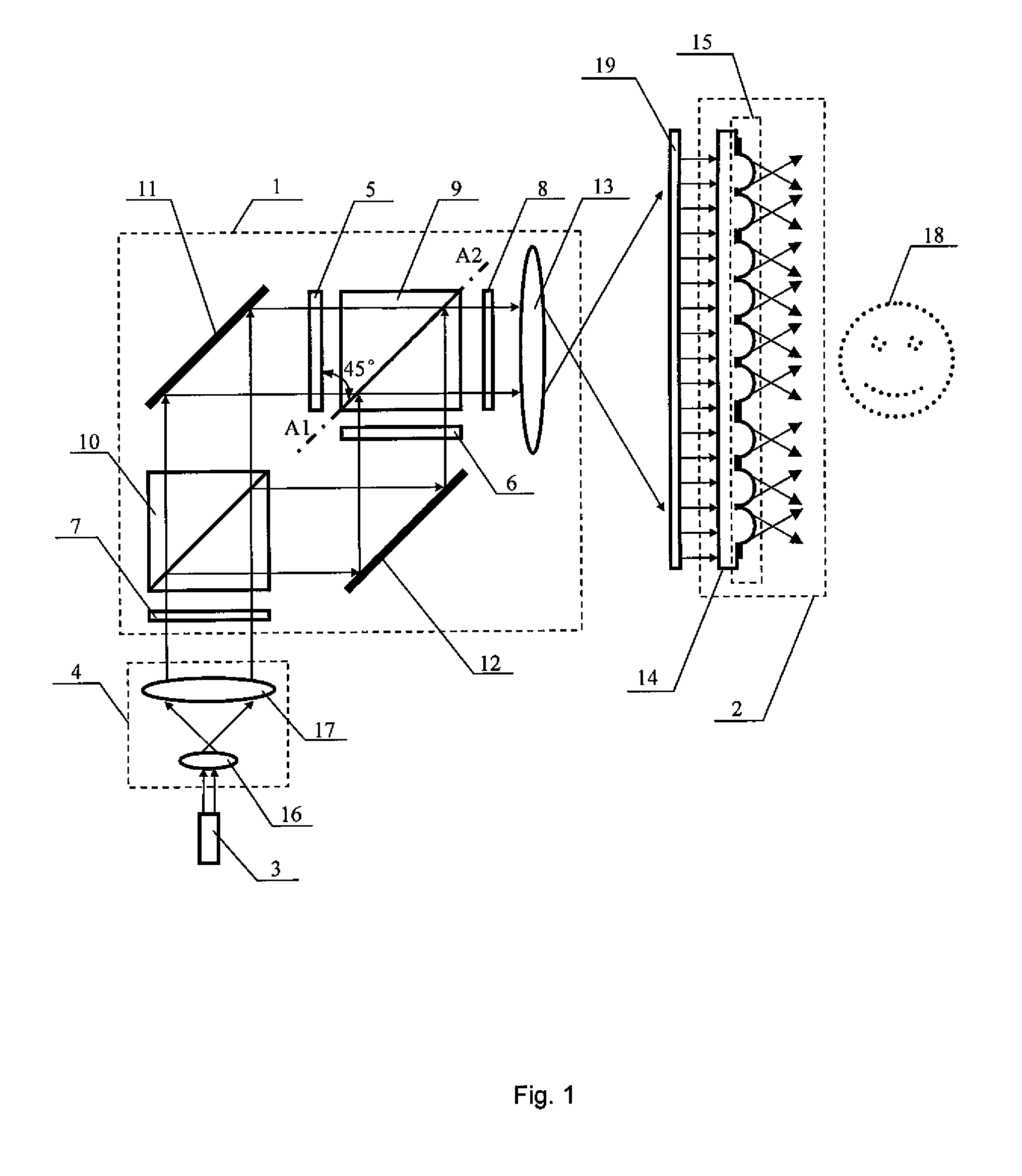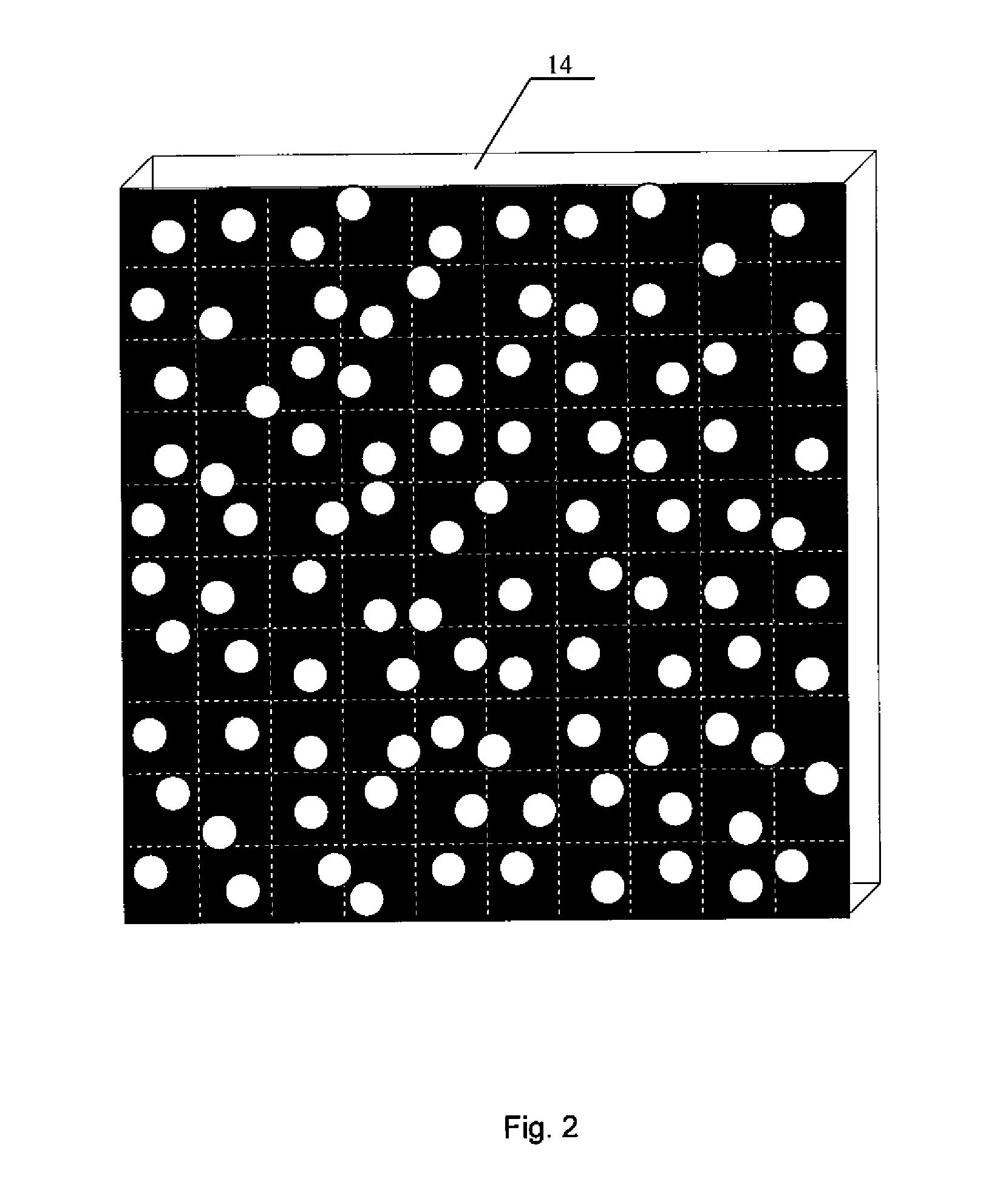Method and Devices for 3-D Display Based on Random Constructive Interference
a technology of random constructive interference and 3d display, which is applied in the direction of holographic process, holographic nature/properties, instruments, etc., can solve the problems of putting a great burden on real time data processing, and it is difficult to generate 3-d holographic images with such low resolution liquid crystal screens, and achieve high density interference patterns.
- Summary
- Abstract
- Description
- Claims
- Application Information
AI Technical Summary
Benefits of technology
Problems solved by technology
Method used
Image
Examples
Embodiment Construction
[0061]FIG. 1 is a schematic diagram of a 3-D display device based on random constructive interference using two small-sized TFT-ST projection type liquid crystal panels. It comprises an amplitude-phase-modulator-array 1, a random-secondary-light-source-generator-array 2, a coherent light source 3 and an illuminating optic system 4. The amplitude-phase-modulator-array 1 comprises two transmission liquid crystal panels 5, 6, two polarizer 7, 8, two beam splitters 9, 10, two reflectors 11, 12 and a projection lens 13. Two beam splitters 9, 10 and two reflectors 11, 12 are disposed to form a Michelson interferometer with two transmission liquid crystal panels 5, 6 placed on the interferometer's two arms respectively. The first transmission liquid crystal panels 5 seats at an angle of 45 degree to half-reflect-half-transmit surface A1-A2 of the second beam splitter 9 and in mirror symmetry with the second transmission liquid crystal panel 6 relative to the second beam splitter 9's half-r...
PUM
 Login to View More
Login to View More Abstract
Description
Claims
Application Information
 Login to View More
Login to View More - R&D
- Intellectual Property
- Life Sciences
- Materials
- Tech Scout
- Unparalleled Data Quality
- Higher Quality Content
- 60% Fewer Hallucinations
Browse by: Latest US Patents, China's latest patents, Technical Efficacy Thesaurus, Application Domain, Technology Topic, Popular Technical Reports.
© 2025 PatSnap. All rights reserved.Legal|Privacy policy|Modern Slavery Act Transparency Statement|Sitemap|About US| Contact US: help@patsnap.com



